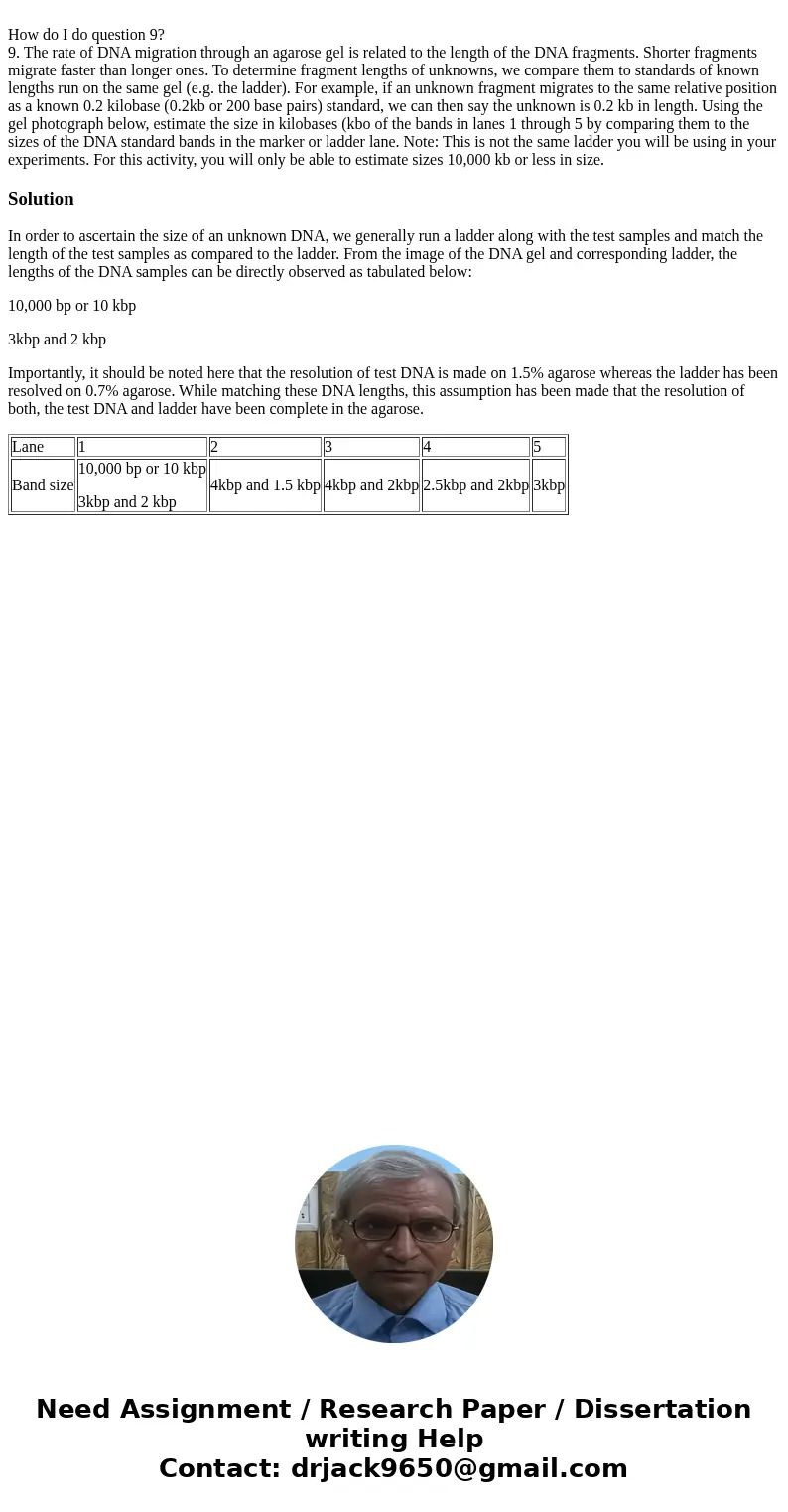How do I do question 9 9 The rate of DNA migration through a
How do I do question 9?
Solution
In order to ascertain the size of an unknown DNA, we generally run a ladder along with the test samples and match the length of the test samples as compared to the ladder. From the image of the DNA gel and corresponding ladder, the lengths of the DNA samples can be directly observed as tabulated below:
10,000 bp or 10 kbp
3kbp and 2 kbp
Importantly, it should be noted here that the resolution of test DNA is made on 1.5% agarose whereas the ladder has been resolved on 0.7% agarose. While matching these DNA lengths, this assumption has been made that the resolution of both, the test DNA and ladder have been complete in the agarose.
| Lane | 1 | 2 | 3 | 4 | 5 |
| Band size | 10,000 bp or 10 kbp 3kbp and 2 kbp | 4kbp and 1.5 kbp | 4kbp and 2kbp | 2.5kbp and 2kbp | 3kbp |

 Homework Sourse
Homework Sourse